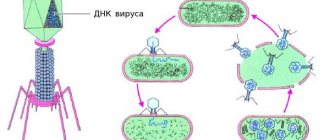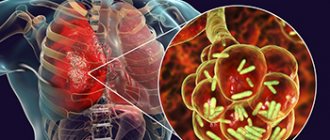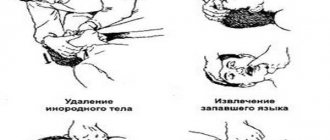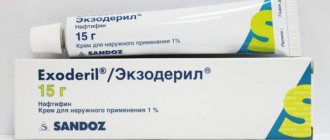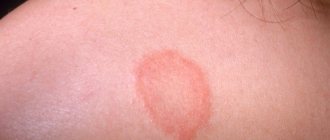Antibiotics are substances of biological or semi-synthetic origin. They are used in medical practice to combat pathogenic microbes and viruses. Before the advent of these medications, typhoid fever, dysentery, pneumonia, and tuberculosis had the status of incurable diseases. Today, treatment of infectious diseases is possible with the use of 1-6 generations of antibiotics.
At this moment, the pharmacological industry produces more than 2000 varieties of drugs of this type. Doctors have described the effects of about 600 positions, and about 120-160 drugs are used in medical practice.
Important! For any disease, it is recommended to take antibiotics after consulting a doctor. Otherwise, antibiotic resistance may develop (decreased sensitivity of pathogenic microorganisms to antibacterial agents).
According to the form of its course, bronchitis is divided into acute and chronic.
Chronic bronchitis
is a chronic inflammation of the bronchial tubes.
Chronic bronchitis is considered if the cough continues for at least three months a year for two years in a row. According to etiology
(causes of occurrence),
viral, bacterial and allergic bronchitis are distinguished.
More than 80% of bronchitis is viral, infection occurs through airborne droplets, and proceeds like a normal acute respiratory viral infection, with the difference that the viruses that cause bronchitis prefer to “settle” in the bronchial tissue.
Classification of antibiotics
All antibacterial agents can be divided into 5 categories according to their characteristics and range of application. Let's take a closer look at this classification:
Mechanism of action:
- Bactericidal - the active substances of the drugs completely destroy bacteria and viruses. After taking such strong drugs, all pathogenic microflora in the human body dies.
- Bacteriostatic – inhibits the growth or spread of viruses. Thus, the cells remain “alive” without forming pathogenic flora.
Symptoms of bronchitis
- Bronchitis has classic symptoms for any ARVI:
- Increased body temperature
- A sore throat
- Runny nose
- Shortness of breath, difficulty breathing, noisy breathing (not always)
- Crepitating (crackling) and quiet whistling rales
- Cough
The main and main symptom of bronchitis is cough.
It can be dry or wet, depending on the form of the disease and the stage of its course. One of the variants of the course of bronchitis in children is obstructive bronchitis - this is a condition in which spasm of the bronchi occurs, the mucous membrane swells, and phlegm becomes difficult to discharge - it accumulates in the bronchi, causing difficulty breathing. Bronchial spasm also contributes to difficulty breathing - this is the main danger of obstructive bronchitis - the baby begins to choke. Obstructive bronchitis is characterized by noisy exhalation with a whistle.
Bronchitis in a child and treatment with a nebulizer
Inhalation using a compressor nebulizer is the best way to cure bronchitis in a child. For infants, competent pediatricians recommend adding 6-8 drops of Berodual solution to the inhalation chamber to expand the airways and improve coughing. In addition to the bronchodilator (berodual), a solution for inhalation lazolvan or ambrobene is added to the inhalation chamber of the nebulizer (for children under one year old - 0.5 ml, over one year old - 1.0 ml), and this cocktail of drugs is diluted in a small amount, approximately 1.0 ml of saline solution or children's drinking water. The pediatrician prescribes such inhalations 2-3 times a day for 10 minutes for at least 5 days. But this is still not enough.
If you do only one inhalation and nothing else, then the child’s cough and bronchitis can drag on for a long time. After inhalations (not immediately, but after about half an hour - an hour), but before feeding, you need to carry out a back massage with mandatory vibration techniques (such as tapping with your fingertips, and for a child over a year old - with the edge of your palms along the intercostal spaces), as well as some simple procedures from breathing exercises . A child under one year old is usually ridden on a fitball (large massage ball), placed on his stomach (up to 6-7 months), and at an older age you can put the child on the ball, like on a horse. Instead of a fitball, if you have some experience, you can use your own knees, then you can combine light jumping on your knees with a back massage. Children after 2 - 3 years old, as a rule, can and love to play with various inflatable tubes or blow bubbles through a straw.
In general, inhalations are good because the necessary medicine is delivered directly to the site of inflammation itself, and is not “smeared” throughout the body. Plus, mineral water or saline solution, which we add to the nebulizer, moisturizes the mucous membranes of the trachea and bronchi, which suffer from drying out at elevated temperatures and a strong cough in a child.
Diagnosis of bronchitis
To diagnose bronchitis, neither an X-ray examination nor additional tests are needed.
To make a diagnosis, the doctor simply needs to perform auscultation - listen to the lungs using a phonendoscope - an experienced pediatrician will immediately “hear bronchitis”. Additional examinations are prescribed
in order to determine the type of bronchitis - viral or bacterial - the purpose of therapy depends on this. As you know, antibiotics have no effect on viruses, so they are prescribed only if the doctor believes that bronchitis is bacterial in nature. A blood test can tell you this. Also, the pediatrician determines the type of bronchitis by collecting an anamnesis (medical history): how long has the child been sick, how the disease progresses, how long ago was it sick last time, how was it treated, etc.
X-ray
for bronchitis, they may be prescribed in order to exclude pneumonia, a possible complication of this disease. Unfortunately, it is difficult to diagnose pneumonia in young children without an x-ray - local changes in some segments of the lungs cannot always be heard.
New generation antibacterial agents
The difference between the latest generations of antibiotics and their earlier versions is a more advanced formula of the active substance. Active components specifically eliminate only pathological reactions in the cell. For example, new generation intestinal antibiotics do not disrupt the microflora of the gastrointestinal tract. At the same time, they fight an entire “army” of infectious agents.
The newest antibacterial drugs are divided into five groups:
- Tetracycline – tetracycline.
- Aminoglycosides – streptomycin.
- Penicillin series - amoxicillin and others.
- Amphenicols – chloramphenicol.
- Carbapenem group – meropenem, imipenem, invaz.
Let's consider several well-known antimicrobial agents of imported and Russian production.
Amoxicillin is an imported antimicrobial drug from the penicillin group. Used in medical practice to treat bacterial infections. Effective for intestinal infections, sinusitis, sore throat, Lyme disease, dysentery, sepsis.
Avelox is the latest generation of medications from the group of fluoroquinolones. It has a strong effect on bacterial and atypical pathogens. Does not harm the kidneys and gastrointestinal tract. Used for acute and chronic diseases.
Cephalosporins are third generation antibiotics. This group includes Ceftibuten, Ceftriaxone and others. Used to treat pyelonephritis and pneumonia. In general, these are safe products with few side effects. However, they should be taken only after consulting a doctor. There are many medications, but a specialist will recommend which one to choose.
Doriprex is an imported antimicrobial drug of synthetic origin. Showed good results in the treatment of pneumonia, advanced intra-abdominal infections, pyelonephritis.
Invaz is an antibacterial agent from the carbapenem group. Available in ampoules for parenteral administration. Shows a rapid effect in the treatment of bacterial disorders of the skin, soft tissues, urinary tract infections, pneumonia, septicemia.
Augmetin is a third generation semi-synthetic penicillin with the addition of enhancing inhibitors. Pediatricians recognize it as the best comprehensive medication for the treatment of childhood sinusitis, bronchitis, tonsillitis and other respiratory tract infections.
Cefamandole is a Russian-made antibacterial agent. Belongs to the group of third generation cephalosporins. Used to treat intestinal infections, pathogens of genital infections. As an antimicrobial agent with a wide range of effects, it is used for colds.
How to treat bronchitis
There is no universal treatment regimen for bronchitis.
The choice of therapy depends on many factors: the type of bronchitis (viral or bacterial), duration, characteristics of the course of the disease, cough (it can be dry, wet, only during sleep or after sleep, etc.), the condition of the child.
When treating bronchitis
, it is very important that normal air humidity (40-60%) is maintained in the room where the child is located. It is necessary to protect the patient from tobacco smoke (passive smoking during bronchitis is very dangerous).
Summary
We reviewed Russian and imported broad-spectrum antibiotics and briefly described the classification of drugs. Let's answer the question: which antibacterial agents to choose?
It is important to understand that antimicrobial drugs for extensive use are toxic and therefore negatively affect the microflora. In addition, bacteria mutate, which means the drugs lose their effectiveness. Therefore, antibacterial agents with the latest structure will be a priority over their earlier counterparts.
Self-medication with antibiotics is dangerous to health. In case of an infectious disease, the first step is to consult a doctor. The specialist will determine the cause of the disease and prescribe effective antibacterial agents. Self-medication “at random” leads to the development of antibiotic resistance.
Is it possible to use antitussive drugs?
A severe cough exhausts both the baby and family members. Of course, you want to alleviate the child’s condition by giving him a drug that relieves cough. But you should absolutely not do this without a doctor’s recommendation! Why? Firstly
, there are a great variety of antitussive drugs, and it is difficult to choose the right one on your own.
There is no drug that can be used from the beginning to the end of the disease - the active substance is selected depending on the stage. Secondly,
an unreasonable selection of an antitussive drug can provoke complications, for example: you gave a child a medicine that suppresses cough at a time when sputum begins to separate, because of this he cannot get rid of sputum, it stagnates and leads to pneumonia.
Thirdly,
children's medications are produced mainly in the form of syrups containing fragrances, flavors, preservatives, stabilizers, etc. - these components often cause allergies.
What you need to pay special attention to
If your child's condition worsens or new symptoms appear
- Cough does not go away after a month
- Bronchitis recurs (more than three episodes per year)
In these cases, be sure to show the child to the pediatrician!
SEPARATELY Do I need to see a doctor for a common acute respiratory infection? Young children can get sick with acute respiratory infections 8-12 times a year - and this is normal, since their immunity is developing, their body is just getting acquainted and learning to resist many viruses and bacteria. And parents, already accustomed to endless colds, often treat the child themselves - because they do not see the point in visiting a doctor every time the child gets sick. But the problem is that only a doctor can determine whether your child has a truly banal acute respiratory infection that does not require drug treatment and intervention in its course, or a more serious condition. In children, all processes go quickly, not all diseases have an acute onset, and without the control of an experienced doctor, you can very easily miss a complication or a more serious illness: the same bronchitis, tracheitis, pneumonia, etc. In addition, children usually play even with a serious illness , jumping and running, which can mislead parents regarding the actual severity of the disease. Therefore, if your child gets sick, be sure to show him to the pediatrician - after all, only a doctor can objectively assess your baby’s condition!
Inhalations: benefits and harm Now nebulizers, devices for inhalation, are extremely popular among parents. Doctors unanimously agree that inhalations are a good thing. Using this device, we can deliver the medicine directly to the bronchi, which reduces the load on the gastrointestinal tract and circulatory system and ensures the rapid action of the drug. But! A nebulizer can only be used when indicated and when using certain medications prescribed by a doctor. Nebulizers are designed to deliver medication to the middle sections of the respiratory system, that is, they are effective for bronchitis and asthma. They should be used with caution for upper respiratory tract diseases (common acute respiratory infections or acute respiratory viral infections). Why? Firstly, because the drugs used to treat the lower respiratory tract are not effective in the inflammatory process in the nasal cavity and pharynx, and secondly, for using a nebulizer for diseases of the upper respiratory tract there are a number of conditions and rules that only doctor.
By composition
Antibacterial drugs are divided into 6 groups:
- Penicillins are the first antimicrobial drugs, obtained back in 1928 from a biological substance (Penicillium fungi). For a long time they remained the most popular medicine for the treatment of infectious diseases.
- Cephalosporins belong to the group of the most powerful antimicrobial agents with a wide range of applications. They completely destroy pathogenic flora and are well tolerated by humans.
- Macrolides are the name of a group of narrow-range antimicrobial agents. They do not destroy the diseased cell, but only stop its growth. This category includes the following drugs: erythromycin, spiramycin, azithromycin.
- Tetracyclines are good drugs for the treatment of infectious diseases of the respiratory and urinary tract.
- Fluoroquinolones are antimicrobial agents with a wide range of effects. Completely destroy pathogenic microorganisms. You can find 1st-2nd generation medications on sale. Doctors usually prescribe them to combat Pseudomonas aeruginosa.
- Aminoglycosides are antimicrobial drugs with a wide range of applications. Popular drugs in this group - streptomycin (therapy of tuberculosis, plague) and gentamicin - are used as ointments, eye drops, and injections for ophthalmic infections.
Generations of drugs. Advanced antimicrobial drugs already have six generations. For example, penicillin was the first drug of natural origin, while the third or sixth generation is an already improved version, which includes the strongest inhibitors. The relationship is direct: the newer the generation, the more effective the effect of drugs on pathogenic microflora.
By method of administration. Oral – taken by mouth. These are various syrups, tablets, soluble capsules, suspensions. Parenteral - administered intravenously or intramuscularly. They work faster than oral medications. Rectal medications are injected into the rectum.
Important! Taking antibiotics is allowed only after consulting a doctor, otherwise antibiotic resistance will develop.
Drug therapy
Of course, it is quite possible and even necessary to treat bronchitis without antibiotics, but sometimes it is difficult to do without the use of symptomatic drugs. The main condition is that the medications must be prescribed by the attending physician, with regular monitoring of the patient’s condition after taking the medications.
Cough remedies
Cough is the main symptom during bronchitis, as viscous mucus accumulates in the lungs. It must be diluted with the help of mucolytics, and then removed by taking expectorants. It is not recommended to use the second group of drugs without using the first, as health complications may arise.
Drugs used to treat cough (the active substance is indicated in parentheses):
- ACC, Fluimucil (acetylcysteine);
- Ambrobene, Lazolvan, Flavamed (ambroxol);
- Fluditec, Bronchobos (carbocysteine);
- Bromhexine, Bronchosan (bromhexine).
Before use, it is recommended to consult a doctor who will prescribe the required dosage and adjust the course of taking the drug. Self-prescription of the drug is prohibited.
Antipyretics
This group of drugs is prescribed for high temperatures that rise above 38.5 degrees. Up to this point, the body is able to fight the infection itself, but if it is higher than permissible, it can become dangerous to the health of vital organs. Tablets based on ibuprofen or paracetamol are good for reducing fever. In addition, they are allowed to be taken by children and pregnant women, which proves their harmlessness.
Antipyretic drugs:
- Paracetamol;
- Panadol;
- Aspirin;
- Nurofen;
- Axofen-P.
In order to avoid overdose in adults and children, it is recommended to alternate the use of ibuprofen and paracetamol based products.
Treatment should be stopped if the temperature does not go away within 3 days. This patient's condition requires immediate examination by a doctor.
Antihistamines
Allergy medications for the treatment of bronchitis are prescribed to reduce bronchial hyperactivity and excessive mucus production in response to external irritants. This is especially true if you have an allergic form of the disease or a history of bronchial asthma. Most of the drugs from this group cannot be combined with drinking alcoholic beverages, as they can enhance the effect of ethyl alcohol on the body.
Antihistamines:
- Suprastin;
- Diphenhydramine;
- Tavegil;
- Diazolin;
- Loratadine;
- Claritin.
First generation drugs have a persistent hypnotic effect; if this needs to be avoided, 2nd and 3rd generation tablets should be used. The dosage should be prescribed by an allergist. Patients should remember that many bronchial diseases cannot be treated without taking antihistamines and therefore this group of drugs should not be neglected.
Immunostimulating
When the main manifestations of the disease are over, it is recommended to start taking medications that support the immune system. With the help of a therapist, it is worth choosing a complex of vitamins, immunostimulating agents, and dietary supplements. However, this point is not the main one; you can skip it by making a choice in favor of normalizing your diet and healthy lifestyle.
Causes of prolonged cough not related to bronchitis:
- sinusitis and postnasal drip syndrome (this is the flow of nasal mucus along the back wall of the pharynx into the respiratory tract). Most patients have mucous or mucopurulent nasal discharge.
- postnasal drip can occur with general cooling of the body, allergic and vasomotor rhinitis, irritating environmental factors;
- Various foreign bodies can enter the child’s bronchi - through swallowing, choking, inhalation;
- oncology, pleurisy - here the diagnosis will be correctly made when additional types of examination are carried out;
- a prolonged cough can be due to heart failure (in this situation, the cough often occurs at night when the child is sleeping); the diagnosis is helped by examination of the chest organs and echocardiography.
- a child may be allergic to various irritants (food, household or plant allergens, taking certain medications, the presence of some animals in the house).
- If a child has a prolonged cough, it is necessary to exclude the infectious disease whooping cough.
Basic rules for the correct use of antibacterial drugs
- An antimicrobial agent is taken only in the presence of a bacterial infection that is suspected or documented.
- When using the drug, you must adhere to the optimal regimen. The first is the correct choice of medicine. Otherwise, it is necessary to maintain an adequate dose and duration of use.
- When choosing a drug, it is necessary to take into account the regional situation regarding antibiotic resistance of the most common pathogens and take into account the likelihood of infection of the patient with these bacteria.
- Do not use low quality antibiotics with unproven effectiveness.
- Do not use antibiotics for prophylactic purposes.
- The effect of using an antibacterial agent is assessed 48-72 hours after the start of treatment.
- Explain the harm of non-compliance with the medication regimen, and also explain the dangers of self-medication.
- Promote the correct use of the drug by the patient.
- In each case, it is necessary to use methods to determine the cause of the infection.
- When prescribing an antibacterial drug, doctors must adhere to recommendations based on evidence-based medicine.
Antibiotic resistance
Antibiotic resistance is the term for resistance to antibiotics. Who is to blame for this? The main reason is the excessive and uncontrolled use of antimicrobial agents. This applies not only to medicine.
Prescribing antibiotics should always be justified.
Causes
- Application in medicine. Unjustified prescription on an outpatient basis, in a hospital, self-medication (over-the-counter). The main emphasis is on counteracting the unjustified prescription of antibiotics in primary care (at the outpatient stage). For this purpose, clinical recommendations and algorithms for prescribing antibiotics to children are specially developed and implemented in practical healthcare. Also, through the media, explanations are provided to the population about the need for the judicious use of antimicrobial agents and the dangers of their independent use.
- Use of antibiotics in veterinary medicine.
- Application in the agricultural industry.
Prevention
In the modern situation, it is necessary to pay great attention to the prevention of bronchitis. Prevention in children is vaccination against various infections. It is important that not only the child is vaccinated, but that everyone around him is also vaccinated. A big role for children is played by hardening, fresh indoor air, adherence to a daily routine, constant physical education, active walks in the fresh air, proper and regular healthy nutrition appropriate for the child’s age, and the use of vitamins.
The best medicine for bronchitis
Research has found that bronchitis most often affects people with weakened immune systems and those exposed to significant risk factors.
The risk of disease is reduced if you follow a balanced diet that provides the body with essential nutrients - proteins, fats, carbohydrates, minerals and vitamins. Their deficiency weakens the body's protective functions. An active, mobile lifestyle also increases resistance to respiratory diseases.
The best cure for bronchitis is exercise
Bronchitis is often caused by viral infections. Vaccination helps to significantly reduce the risk of infection by viruses. Some vaccinations are given during childhood, while others are seasonal, such as the flu vaccine, which is given before the highest flu season. Even if a vaccinated person gets sick, in this case the disease is much milder and does not cause consequences.
Quitting smoking and alcohol abuse, which suppresses the effect of certain vitamins, disrupts metabolism, impairs heat exchange, also has a beneficial effect on the prevention of bronchitis and other respiratory diseases.
School of Doctor Komarovsky. About bronchitis.


